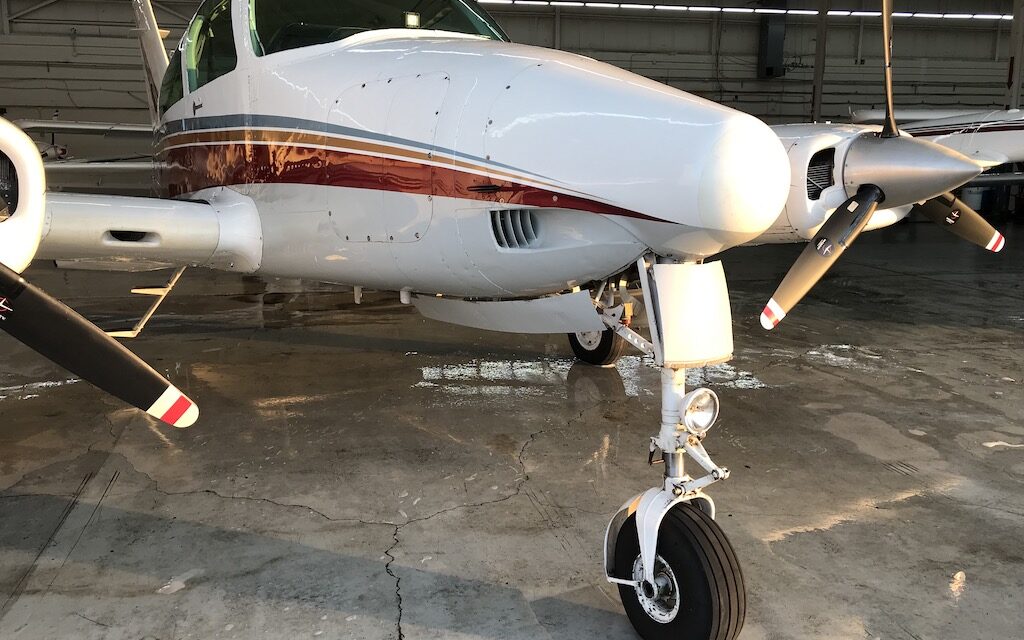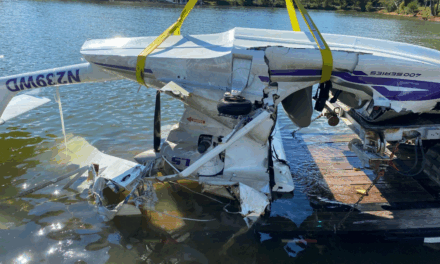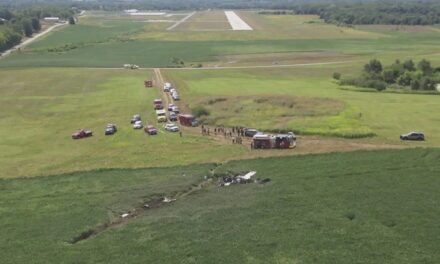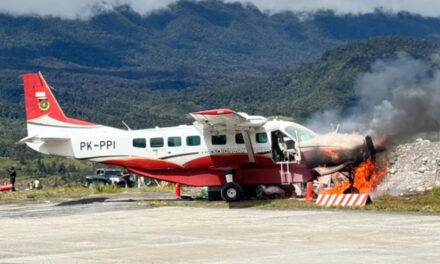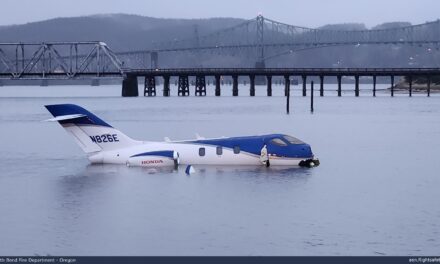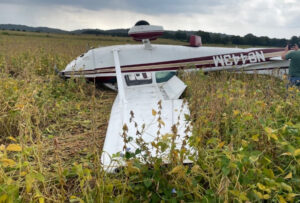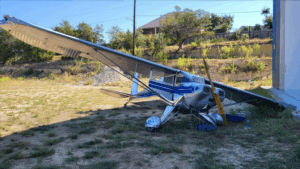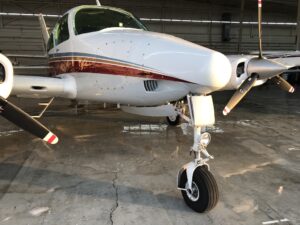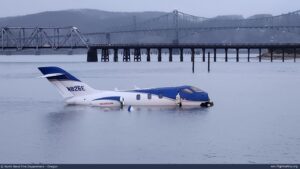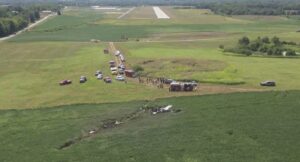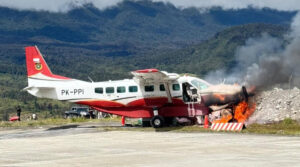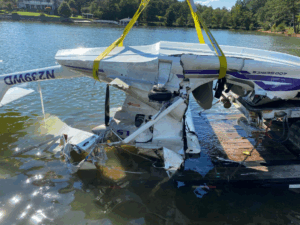On August 23, 2025, the Cessna 310Q N7664Q crash near Milledgeville, Georgia ended in tragedy. The twin-engine aircraft impacted terrain during its final approach to Baldwin County Regional Airport (MLJ), killing the sole pilot onboard and destroying the aircraft. This accident drew swift attention from investigators, local media, and the general aviation community. (NTSB Preliminary Report ERA25FA310) (data.ntsb.gov)
Flight Background & Pilot Intent
The pilot, aged 78, had flown earlier that day to Fairfield County Airport (FDW), South Carolina, to recertify instrument flight rules (IFR) equipment. After completing that task, the aircraft departed FDW around 17:23 local under IFR to return to MLJ, roughly 130 nautical miles away. Radar and ADS-B data show normal en route operations, with altitudes, speeds, and headings matching the filed plan. (NTSB ERA25FA310)
As the aircraft neared the RNAV GPS Runway 10 approach into MLJ, the pilot received clearance to descend to 4,000 ft and to cross the initial approach fix (IBUDY) at or above 3,000 ft. All appeared routine until roughly six miles east of IBUDY, when a sudden left turn and steep descent began without further pilot communication. The controller issued a “low altitude alert” just seconds before radar contact was lost. (NTSB ERA25FA310)
Final Turn & Impact Sequence
Flight tracking shows that during the descent, the aircraft’s ground speed increased dramatically—from ~140 knots to 179 knots—suggesting an uncontrolled dive. The first physical contact was with the tops of 78-foot pine trees. The aircraft then struck level terrain and came to rest with a debris field stretching 660 feet long and 135 feet wide. No post-impact fire was observed. (NTSB ERA25FA310)
Wreckage examination revealed continuity in all primary flight controls (ailerons, rudder, elevator). The elevator trim was held at ~5° nose-up. All flaps were retracted. Fuel system components delivered uncontaminated aviation fuel. The landing gear was found in the retracted position, consistent with approach configuration. Both engines and propellers separated under crash loads and exhibited chordwise scoring—common in high-energy impact scenarios. (NTSB ERA25FA310)
Pilot & Aircraft Context
The pilot was identified in databases like TheDTSB as Robert Andrew Dluhos, aged 78, holding commercial and IFR ratings. (theDTSB.org) (data.thedtsb.org) The aircraft was a certified Cessna 310Q, registered and maintained for personal use. (HangarDebrief) (hangardebrief.com)
At impact, both the pilot and his pet dog died. Local press reported that the crash occurred near State Route 212 in Baldwin County, and that parts of the aircraft were strewn across the site. (Union-Recorder) (unionrecorder.com)
Possible Contributing Factors
No definitive cause has yet been released in the final report, but the preliminary data and patterns suggest a few plausible contributing elements:
- Loss of situational awareness or controlled flight into terrain (CFIT) — sudden descent without communication suggests the pilot may have inadvertently flown below safe altitudes.
- Unstable approach or miscalculated descent rate — the sharp increase in ground speed and abrupt left turn imply a rapidly descending trajectory.
- Instrument or avionics anomalies — since the flight involved recertifying IFR equipment, something could have gone awry during or after that work.
- Pilot age and physiological factors — reactions under IFR and emergent situations may decline with age, especially during high workload conditions.
- Weather and tailwinds — preliminary weather reports indicated overcast ceilings of 2,200–2,500 ft with a 10–15 knot tailwind during the final leg. (NTSB ERA25FA310)
Comparison to Twin-Engine Approach Accidents
Twin-engine aircraft often carry higher expectations of redundancy but are still vulnerable in approach phase accidents. Previous 310-series accidents have involved trim malfunctions, asymmetric power settings, or spatial disorientation during descent in marginal conditions. In many cases, reduced margin for error in twin configurations becomes fatal.
Lessons & Recommendations
From the existing findings, several safety lessons emerge:
- During IFR approach phases—especially in older aircraft with recently maintained avionics—pilots should adhere strictly to published altitudes until the approach is stabilized.
- When descending, maintain adequate airspeed margin; avoid steep, uncontrolled descents.
- Pilots, particularly in advanced age, should keep up IFR currency, perform scenario-based training (e.g. simulated emergencies), and maintain physical readiness.
- Post-maintenance or recertification flights should include phased checks and cautious operational margins.
- Where possible, upgrade legacy aircraft with terrain awareness systems (TAWS) or visual descent tools which might give timely warnings in case of descent error.
Reflections & Broader Significance
The crash of Cessna 310Q N7664Q near Milledgeville is a stark reminder that instrument flight and approach phases carry high risk—even in capable aircraft—because small errors escalate quickly. Here, mechanical failure is not the apparent driver; rather, a loss of control or altitude awareness during descent appears more likely. The loss of a well-rated pilot, in a well-maintained aircraft, emphasizes that human, procedural, and environmental factors are deeply intertwined in accident causation.
As our aviation fleet ages and pilot demographics shift upward, the margin for error narrows. This accident challenges the community to continue investing in training, avionics upgrades, and procedural discipline.
In light of recurring IFR mishaps in legacy aircraft, should installing real-time terrain or descent-warning sensors be mandated for older twin-engine planes to enhance safety?

